The early life of the Chevrolet Corvette was littered with speed bumps and obstacles, and the company came perilously close to axing the badge due to poor sales figures. However, it received a reprieve that was little more than a face-saving exercise at the time, but one that would change the American automotive landscape forever. This 1954 Corvette is 1-of-3,640 built by Chevrolet in that model year. It isn’t perfect, but it is a survivor-grade car that runs and drives like new. It is ready to be enjoyed by a new owner, although they might treat it to a light cosmetic restoration to regain its youthful appearance. If an early Corvette has always been on your Wish List, you will find this one located in Siloam Springs, Arkansas, and listed for sale here on eBay. The owner has set the BIN for this classic at $75,000.
When it hit the showrooms in 1953, Chevrolet offered the Corvette in the single shade of Polo White. While it expanded the color palette to four shades for the 1954 model year, a staggering 89% of buyers still opted for White. If you want to get your hands on an automotive unicorn, keep your eyes open for an original ’54 wearing factory Black paint. The company only produced four cars wearing that color, making it the rarest of the already rare. This Corvette looks tidy in White, and while the paint isn’t perfect, its condition is highly acceptable for a survivor-grade car. It sports a few chips and marks, but nothing that makes a repaint a necessity. The fiberglass seems to have avoided developing any significant flaws, while the owner describes the frame as “beautiful.” The chrome is in good order, and the whitewall tires add the perfect finishing touch to the exterior.
If the exterior presentation of the Corvette was nice, the interior seems to step it up a notch. If buyers in 1954 ordered their Corvette with Polo White paint, they received an interior trimmed in Red. I have heard of one White car built with Beige trim, but that was a case of a buyer who knew the right people within Chevrolet to get that combination. That also raises one other interesting point with the ’54 Corvette. The Order Forms listed a total of seven factory options beyond paint colors. Each of these had a price beside them, but the reality was that every car that Chevrolet built featured all of these “optional” extras as standard fitment. Even the obligatory Powerglide transmission was listed as a $178.35 optional extra. If you declined that, what was your choice? Pushing a new Corvette down the road because you refused to order or pay for the Powerglide was never going to be a great look! Anyway, the interior of this Corvette presents nicely. There is some slight wear and fading on the carpet, but that’s about all I can spot visually. The rest of the trim and the dash look faultless, and the only issue that the owner reports is a non-functioning fuel gauge. It won’t take a lot of detective work to isolate that fault, and addressing it would be a wise move. Nothing tarnishes your image quite like being left stranded at the side of the road in your Corvette because you misjudged the situation and ran out of gas.
Powering the Corvette is a 235ci “Blue Flame” six-cylinder engine that pumps out 150hp. The standard transmission for 1954 was the bulletproof 2-speed Powerglide, which is the combination we find in this car. Company management decreed that the Corvette should be built to a strict budget, utilizing as many existing components as possible. That meant breathing on the existing 235ci six in their armory to drag some additional power to the surface. By increasing engine compression and fitting a more aggressive camshaft and triple Carter side-draft carburetors, power output jumped from 123hp to 150hp. That was better, but buyers still had to contend with the Powerglide when European offerings came equipped with manual transmission. The public perception that the Corvette lacked performance credentials hurt its image and its ready acceptance by potential buyers. However, contemporary surveys reveal that those people who were willing to put their money where their mouth was and buy one were generally happy with the Corvette’s performance. The owner of this car is a genuine enthusiast, and this is not his first C1. The vehicle is completely numbers-matching, and he recently treated it to new brakes and an engine overhaul. He says that it drives like new and that the buyer could use it comfortably as a daily driver.
Chevrolet had high hopes for the 1954 Corvette, and they were prepared to build and sell 20,000 cars per annum. The reality was a long way short of that figure, with only 3,640 cars rolling off the production line. Many of those remained unsold at the end of the year, and the company began to re-evaluate its move into the sports car market. They were on the cusp of axing the Corvette program when Ford unveiled the Thunderbird. While it wasn’t considered a direct competitor to the Corvette, the T-Bird sold up a storm in 1955. This success proved to be fortuitous because Chevrolet decided to persevere to avoid the embarrassment of admitting failure in the face of Ford’s success. It proved to be a wise decision because more than six decades later, only one of those two badges remains in production today. Imagine how different the American automotive landscape would look today if the Corvette had disappeared. Thank goodness someone at Chevrolet was too proud to admit defeat. This Corvette is a shining light from that era, and it is ready to be driven and enjoyed by a lucky new owner. Could that person be you?
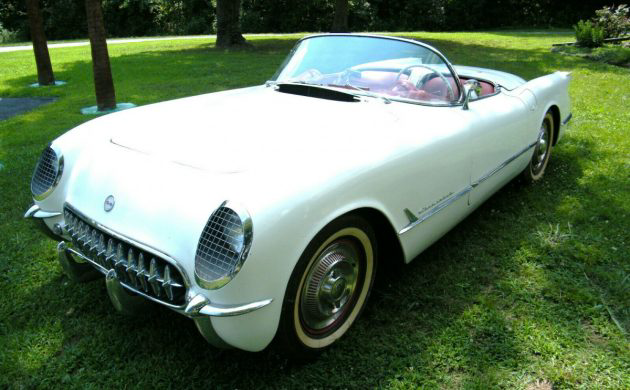
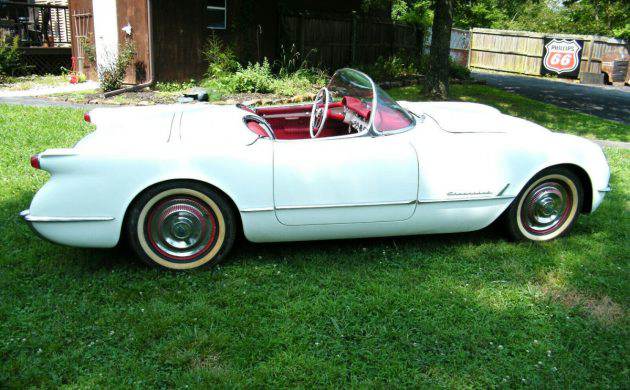
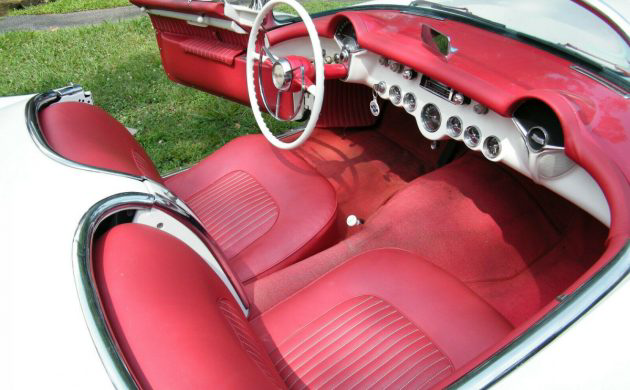
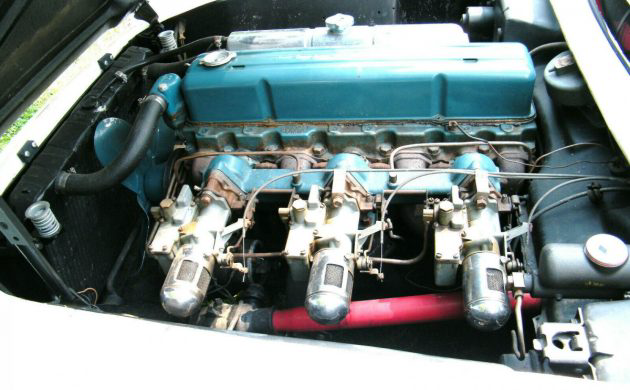
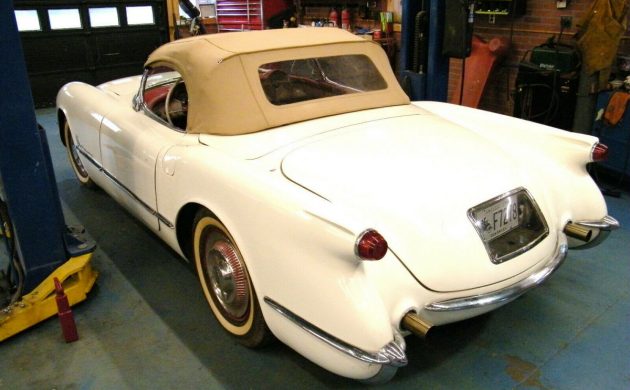


Chevys first mistake was the blue flame/powerglide only, gm cheapens out again, even a 3 speed mighta helped sales, no side windows (dumb), had potential but failed in everything, the t bird did everything right from the beginning….
T-bird may have started out right but Ford managed to turn it into the automotive equivalent of Fat Elvis.
Raymond, couldn’t agree more. There are a lot of ways I might characterize a Power Glide transmission, but bulletproof would not be among them. If you drove any GM car with a Power Glide transmission like you stole it, you’d be rebuilding it in short order with a whole set of bands and clutches (ask me how I know). Hence, the need for development of an actual bulletproof GM automatic transmission in the form of the Turbo 400, like the one in my 454 Super Sport Monte.
My friend’s original powerglide in his ’68 nova with 250 6 cyl has over 300k miles on it! & he beats on it occasionally – floors it in 1st & shifts manually into 2nd(1:1) at about 45-50 mph.
That trans is LIQUID cooled – the early vette’s i think is AIR cooled – aint it?- if so, that does not help matters. Heat is a trans’s worse enemy.
Does BF like 1954 Corvettes? 3 of them posted in day by 3 different writers. I smell collusion here.
Maybe because there were 10X as many 1954’s ?
Now people know what a washed version of a 53,54 and 55 Corvette looks like.
It’s amazing to me, to look at a new Corvette and this. The similarity is in name only, not one part would transfer to each other. Still, while 1954 was a year before my time, I can just imagine the excitement. With a couple exceptions, nothing like this had been seen, except by GI’s overseas and now, it was as close as your local Chevy dealer. It didn’t take long for good old American know how to transform this into the most popular and powerful car you could buy in America, and all these years later, the same still holds true. That’s pretty cool if you ask me, and it all started here.
Have you seen the images of the 1953 debut in New York City? The crowd went wild. And Zora was there. He saw the potential and wrote a letter to GM with some ideas to improve the car. Good thing people wrote and read letters back then!
More dirty whitewalls.
Do we know the vin or serial number ? I know GM has #1 & #2 and possibly #4 & #5. I know where #3 is located. Value is important especially with a lower vin #.
Why would anyone get this one? They could buy the one in pieces from todays add and put 200K into restoring it. Merica!
What became of the 54s not sold
Some police did/do not like license plate frames that hide the state, or a plastic “see thru” cover over a license plate(tho the one here on back is clear – not tinted like most).
I wonder, still, if there was an issue back in the day.
Car shows nice. For $75k it should.
However….
No pics or detail on “…imperfections in paint…” mentioned
For that money, I’d expect the fuel gauge to be working.
Clean those whitewalls, sir!
They didn’t really start making corvettes until Late 1955. These early pieces of work should have stayed on the drawing board for another 2 years. Bumpers were bolted to the fenders, for show. Transmissions were junk, I was surprised the wheels stayed in a straight line. Hell, the ‘31 Ford had better mounting for the bumpers then these 53-55 corvette.
And a million and a half Corvettes later still pumping them out! Good thing they got that bumper thing sorted.
What bumper. They never did get that right. Thank God.
Weren’t these early Vettes essentially carbon copies of the Motorama show car, with just the fender emblems pointing in the opposite direction?!
I think Chevy wanted to beat Ford T-bird to production & quickly gave buyers essentially a concept car for a few years!
I’m willing to bet some complicated expensive modern “cars” with sensors behind the useless IMO “bumpers” are no less impervious to expensive damage than this vette.
Owned a ’54 way back, bought for $600 from a kid headed to Vietnam, sold two years later for $1600 to a mama’s boy who had a Fitch Corvair which I got to drive to ferry the Corvette to his house. The Fitch Corvair was a much, much, better car no matter how your measured it, power, corners, ride, comfort, noise, and no exhaust fumes coming out of those bumper exhaust tips and up over the rear deck. The Corvette went well in a straight line, but resisted going around a corner, the Carter sidedrafts leaked gas, despite rebuilt rebuilds, the plexiglass side curtains took up the trunk or if in place, were hard to see through, but kept them in the trunk since when they were in place exphixiation from the exhaust was an issue. But whoever buys this will just look at it so the driveability comments are really irrelevant.
I had over the years 5 Corvettes and my last one was an 1981. I drove the 1984 when they first came out. I said I would never own another one. The best ones were my 65, 69, and 73. I recall sitting at traffic lights in the Summer with side exhaust on my 65 and 69.The heat from the pipes roll up the door into the interior. The foot well was always hot in the Summer time. Sandals was the dress code.